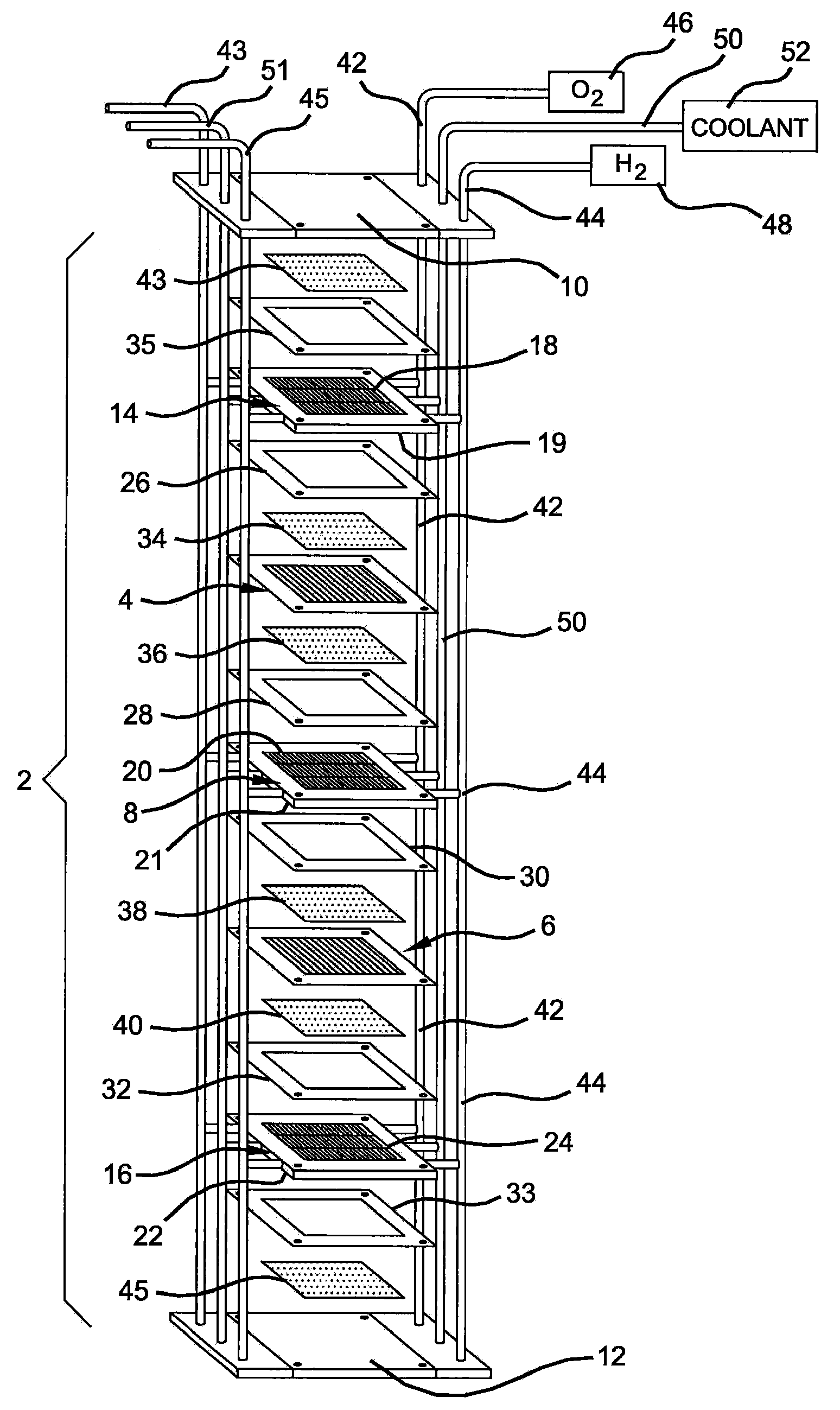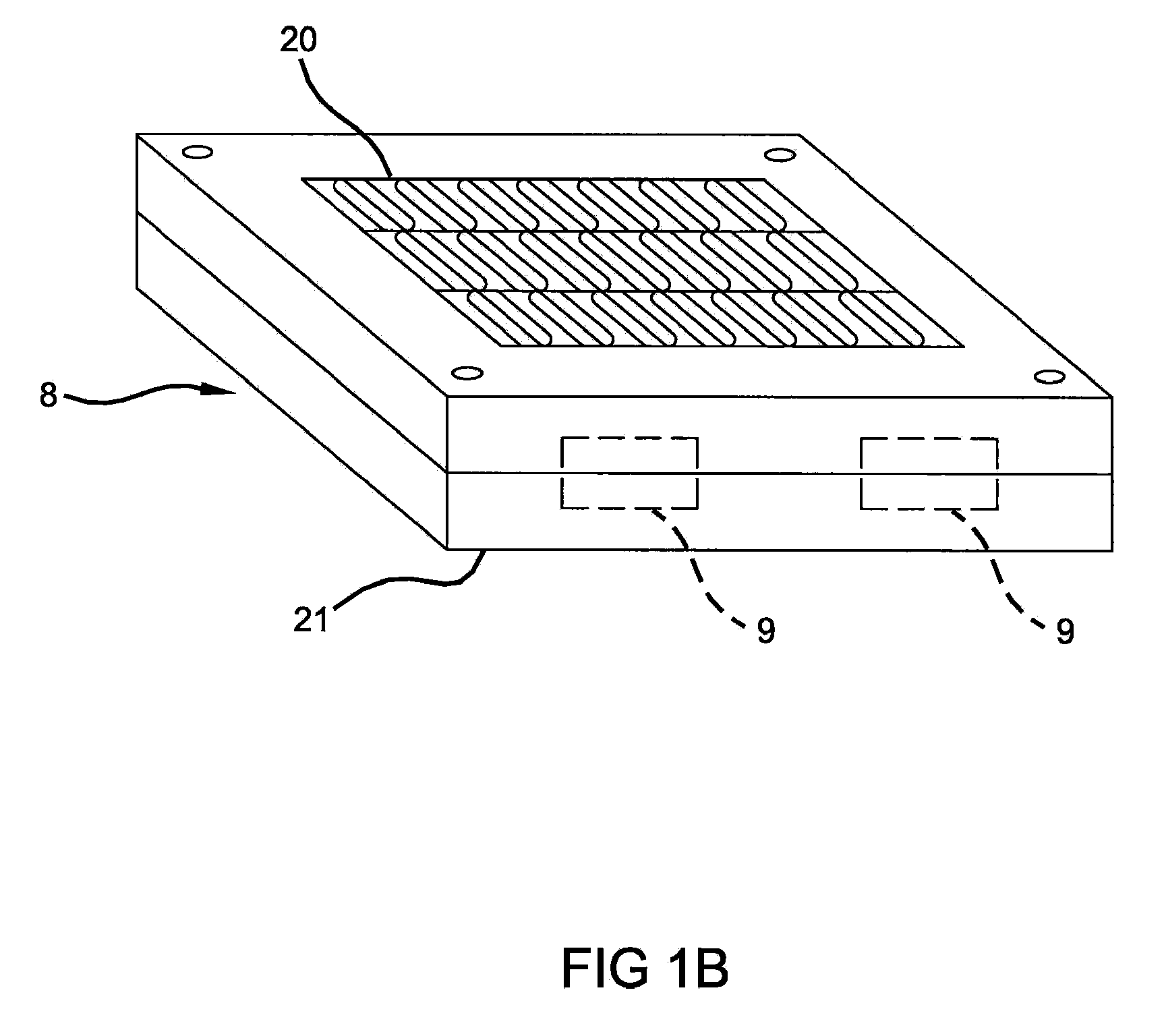Fuel cell separator plate surface treatment by laser ablation
a technology of laser ablation and separator plate, which is applied in the field of polymeric separator plate, can solve the problems of low electrical conductivity of polymeric resin material, prone to breakage of brittle separator plate, and formation of thin layer of polymeric resin on the outside of the formed plate, so as to maintain proper strength and corrosion reduce the contact resistance of the plate, and improve the effect of electrical conductivity
- Summary
- Abstract
- Description
- Claims
- Application Information
AI Technical Summary
Benefits of technology
Problems solved by technology
Method used
Image
Examples
Embodiment Construction
[0027]The following description of the preferred embodiment is merely exemplary in nature and is in no way intended to limit the invention, its application, or uses.
[0028]A method of forming a composite separator plate for use in an electrochemical fuel cell stack is provided in which the plate is formed by compression molding, or any of a variety of alternative methods known in the art, and then using laser ablation to remove a thin outer layer from the plate. The composite separator plate has a body including at least one polymeric material and at least one electrically conductive material. A series of flow channels are formed in a generally smooth surface with conductive particles intact at the surface of anode and cathode composite molded halves that are then bonded together by using a conductive adhesive at the coolant interface to form a bipolar plate. Alternatively, the plate is formed by a metal forming operation and a subsequent optional coating operation. The anode and cat...
PUM
| Property | Measurement | Unit |
|---|---|---|
| step size | aaaaa | aaaaa |
| contact angle | aaaaa | aaaaa |
| electrically conductive | aaaaa | aaaaa |
Abstract
Description
Claims
Application Information
 Login to View More
Login to View More - R&D
- Intellectual Property
- Life Sciences
- Materials
- Tech Scout
- Unparalleled Data Quality
- Higher Quality Content
- 60% Fewer Hallucinations
Browse by: Latest US Patents, China's latest patents, Technical Efficacy Thesaurus, Application Domain, Technology Topic, Popular Technical Reports.
© 2025 PatSnap. All rights reserved.Legal|Privacy policy|Modern Slavery Act Transparency Statement|Sitemap|About US| Contact US: help@patsnap.com



